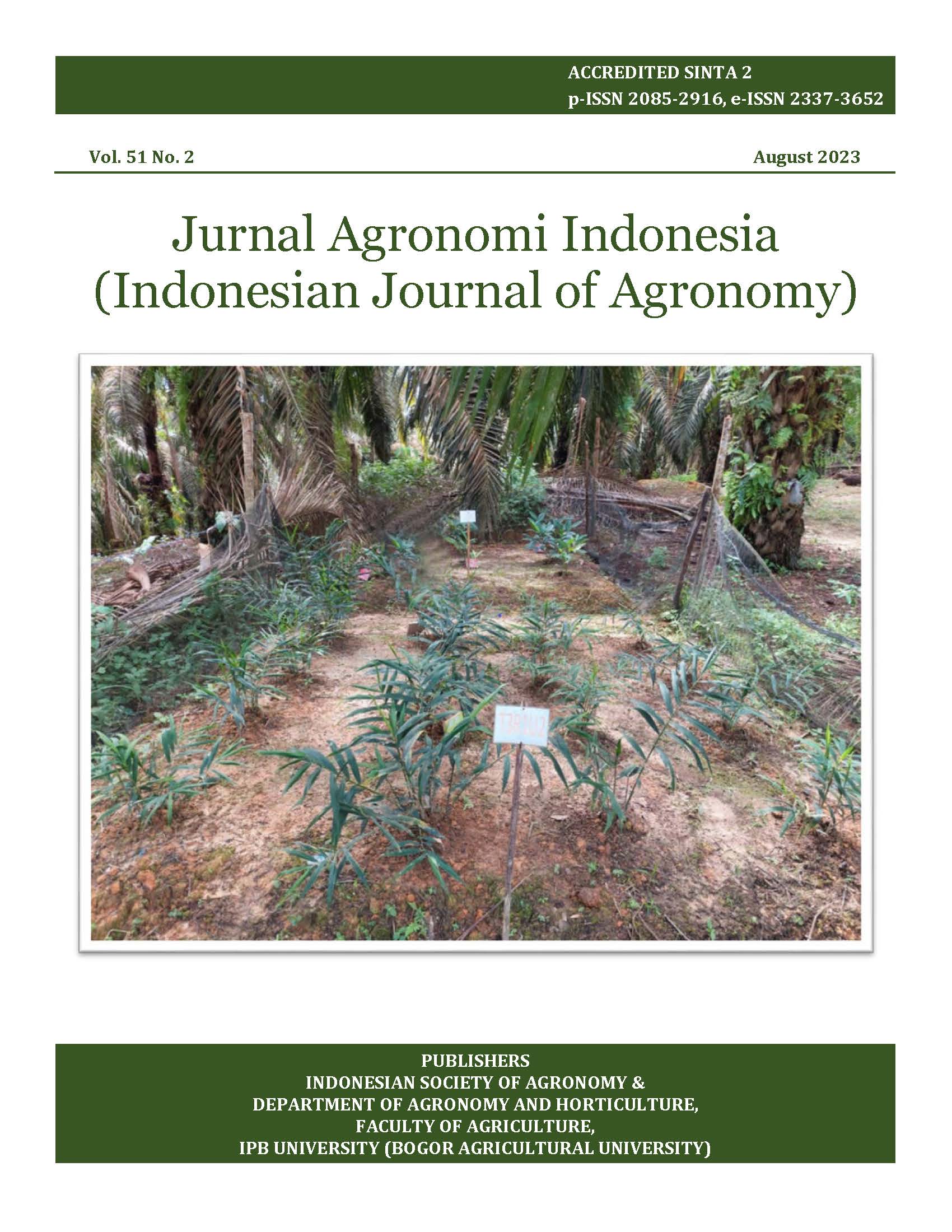Effect of nitrogen doses on growth and yield of several varieties of tungro-infected rice plant
Abstract
Tungro is still a problem in efforts to increase rice production, it can disrupt the stability of rice production if conditions worsen. Plant fertilizer application is an integral part of plant cultivation, especially nitrogen fertilizer. Improper utilization of fertilizers can harm agriculture by increasing plant vulnerability to pests and diseases. Thus, the purpose of the study was to examine the effects of various doses of nitrogen on the agronomic performance of rice plants, as well as their susceptibility to tungro. The research was conducted at the Greenhouse, Sukamandi, and the Muara Experimental Field, Center for Rice Research, Bogor. The experiments, both in the greenhouse and field, used a split-plot randomized complete block design with three replications. The main plots were variety, while the subplots were nitrogen dosage. The results showed that Inpari 36 Lanrang was better than Ciherang and IR64 in terms of plant height, number of tillers, empty grain per clump, leaf greenness, and yield/pot in the greenhouse. While from the field experiment, varieties have different flowering times, plant heights, number of filled grains, number of empty grains, 1,000-grain weight, net assimilation rate, yield/plot, and tungro incidence. The use of nitrogen fertilizer affected flowering time in the greenhouse and affected productive tillers, yield per plot in the field, and the greenness of the leaves of healthy plants. The optimum dose is 167.5 kg ha-1 nitrogen. As a result, it is recommended that controlling tungro disease should involve the integration of fertilizer application that is balanced with the use of resistant varieties.
Keywords: agronomic performance, nitrogen rates, plant diseases, resistant varieties, tungro infection













